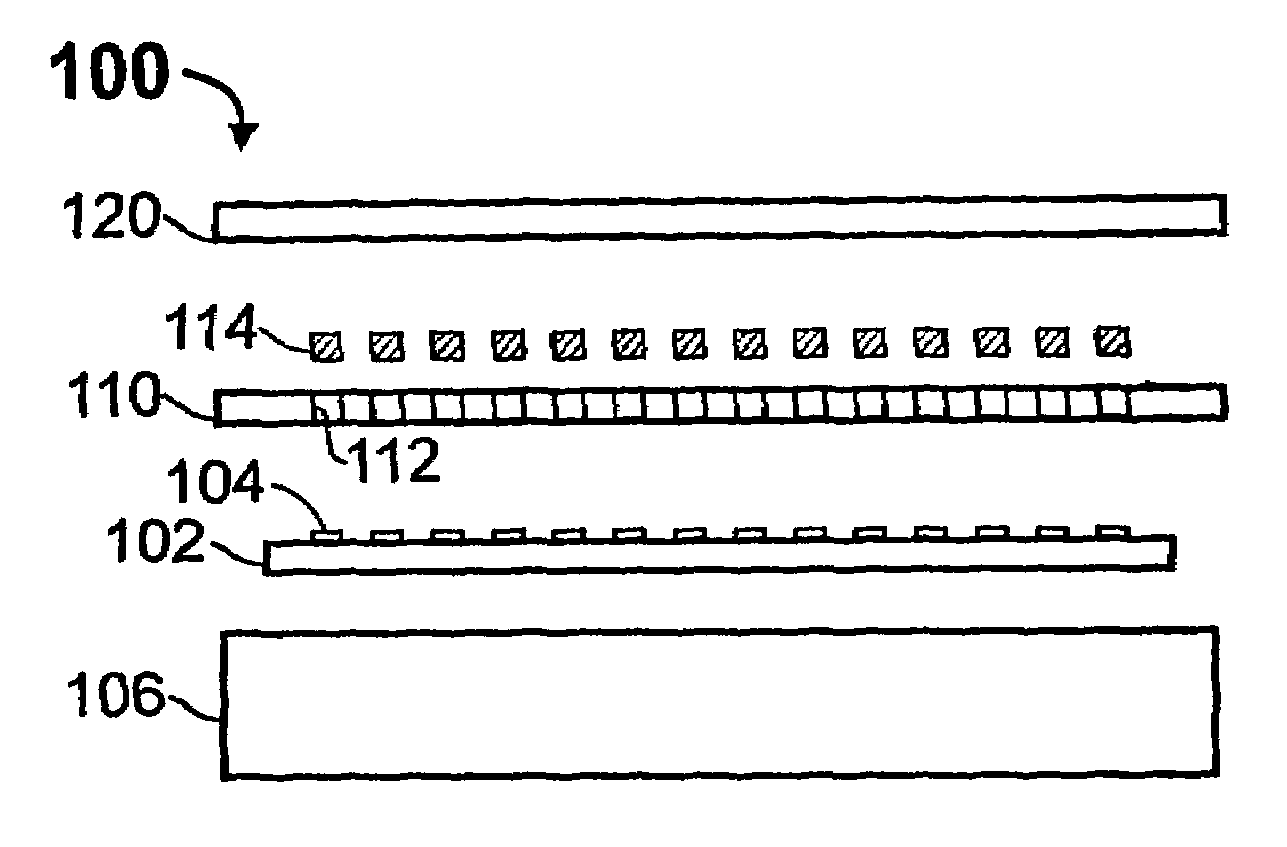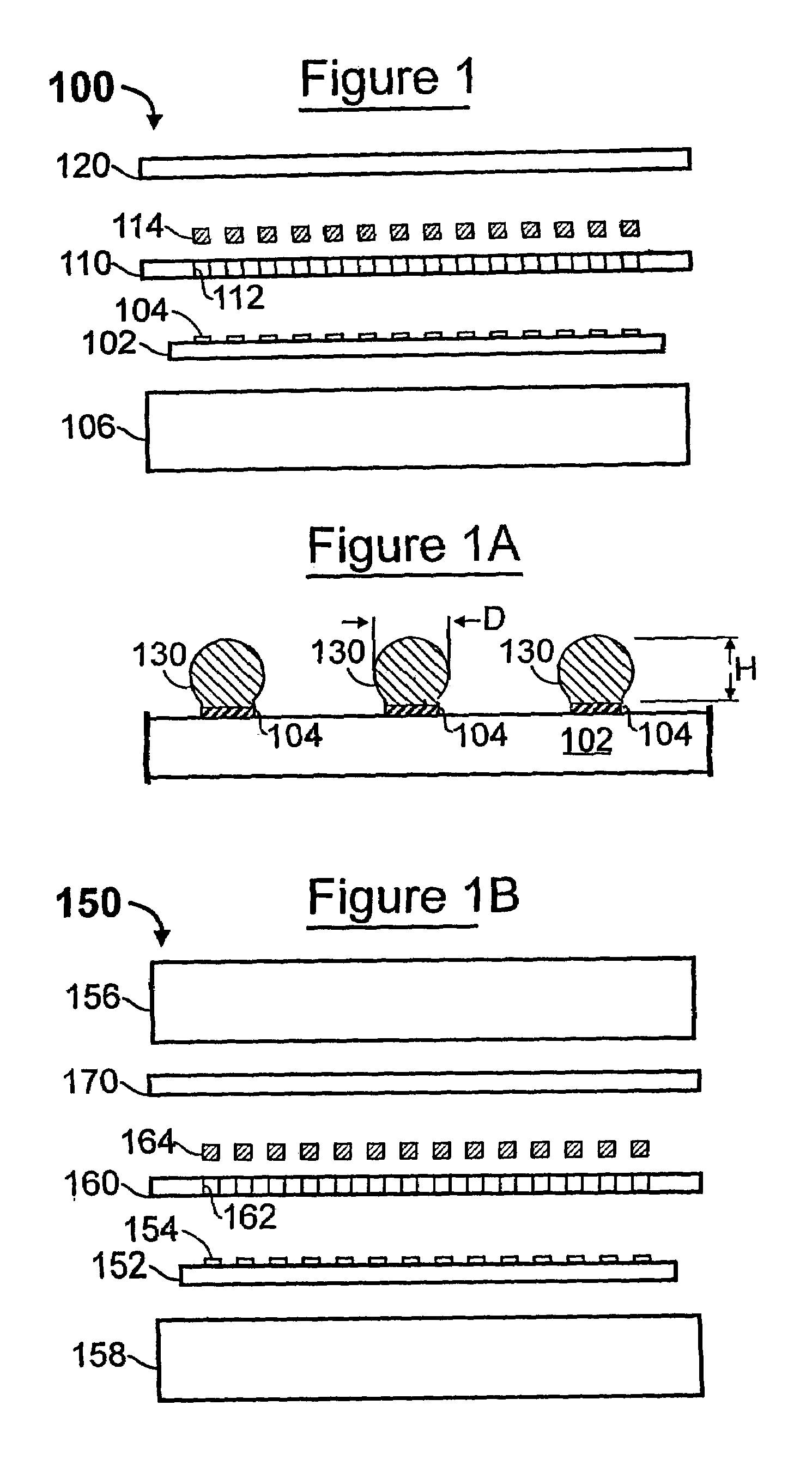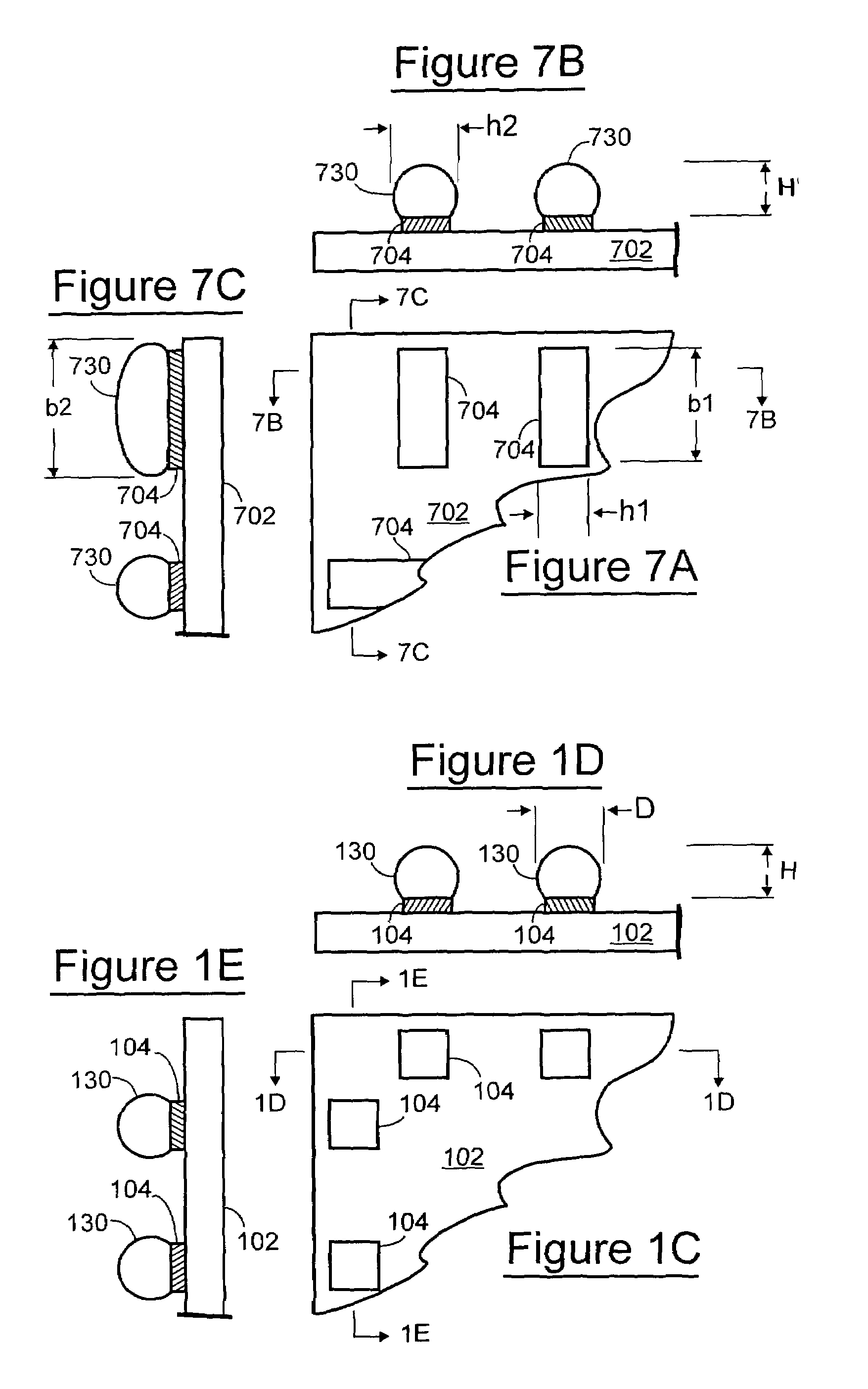Forming solder balls on substrates
a technology of substrates and solder balls, which is applied in the direction of soldering apparatus, non-printed masks,auxillary welding devices, etc., can solve the problems of high cost of metal mask replacement, inconvenient and inability to meet the needs of fine pitch ball bumping
- Summary
- Abstract
- Description
- Claims
- Application Information
AI Technical Summary
Benefits of technology
Problems solved by technology
Method used
Image
Examples
Embodiment Construction
[0110]FIG. 1 illustrates a technique 100 for forming solder balls on a surface of a substrate 102, such as is set forth in “parent” U.S. patent application Ser. No. 08 / 863,800 (U.S. Pat. No. 5,988,487, Nov. 23, 1999), incorporated in its entirety by reference herein.
[0111]The substrate 102 has number of pads 104 on its top (as viewed) surface. The pads 104 are typically arranged in an array, having a pitch (center-to-center spacing from one another). The substrate 102 is disposed atop a heater stage 106.
[0112]A mask (stencil) 110 is provided. The mask 110 is a thin planar sheet of relatively stiff material, such as molybdenum, having a plurality of openings (cells) 112, each corresponding to a pad 104 whereupon it is desired to form a solder ball on the substrate 102.
[0113]The mask 110 is placed on the top (as viewed) surface of the substrate 102 with the cells 112 aligned over the pads 104. The cells 112 in the mask 110 are filled with solder material 114. This is done in any suita...
PUM
 Login to View More
Login to View More Abstract
Description
Claims
Application Information
 Login to View More
Login to View More - R&D
- Intellectual Property
- Life Sciences
- Materials
- Tech Scout
- Unparalleled Data Quality
- Higher Quality Content
- 60% Fewer Hallucinations
Browse by: Latest US Patents, China's latest patents, Technical Efficacy Thesaurus, Application Domain, Technology Topic, Popular Technical Reports.
© 2025 PatSnap. All rights reserved.Legal|Privacy policy|Modern Slavery Act Transparency Statement|Sitemap|About US| Contact US: help@patsnap.com



